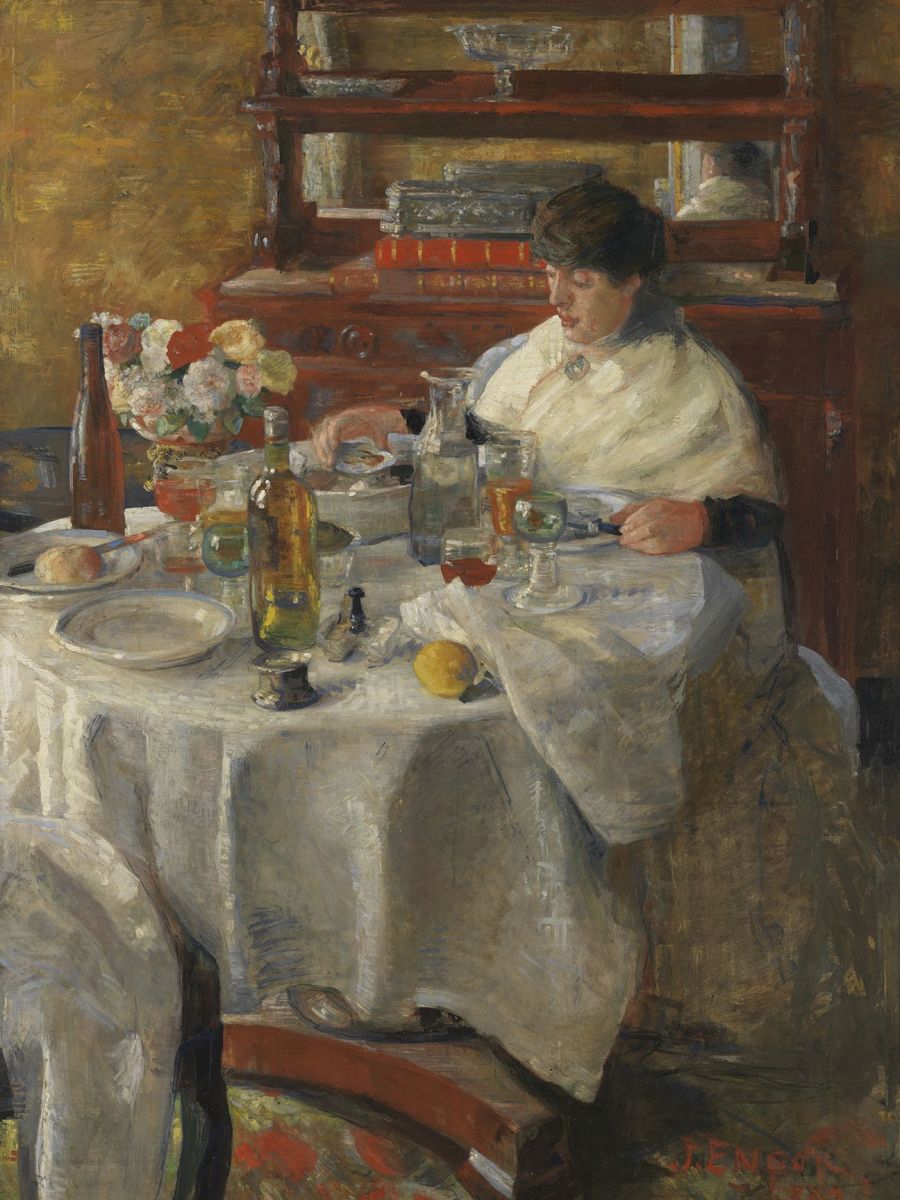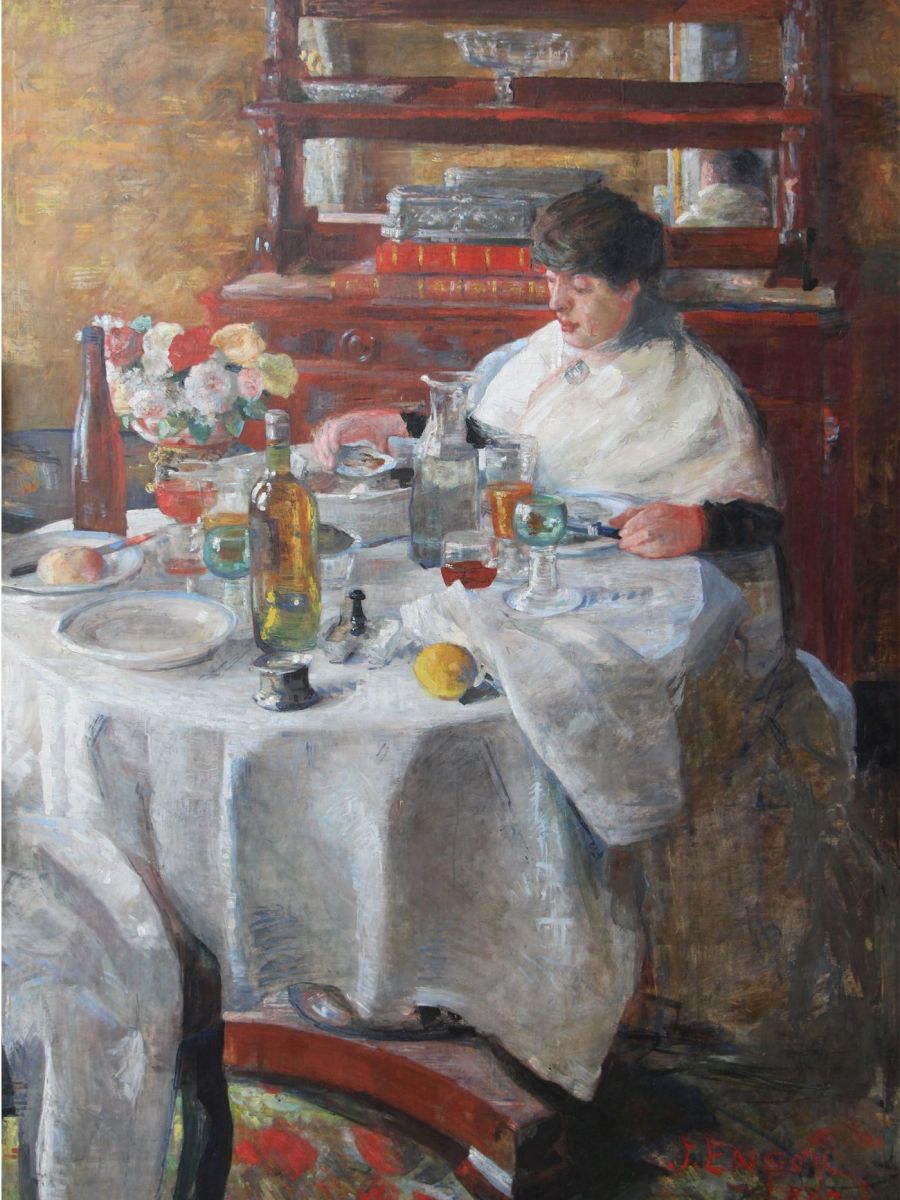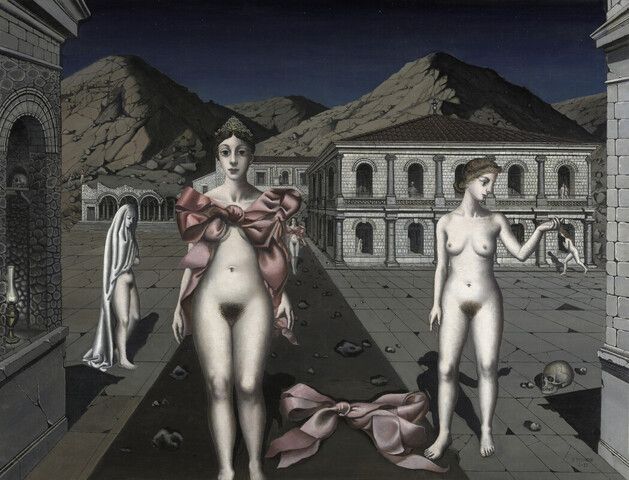Conservation studio as mini-university

The KMSKA may have been closed for a while, but its conservation studio, set up in 1999, has been operating full out. Every work that will be displayed after the reopening has been treated in the meantime, from fundamental restoration to smaller-scale conservation. Gwen Borms coordinates our group of internal and external conservators, while Nico Van Hout is head of Collections Research. Both are conservators themselves. We talk to them here about high-profile treatments, developments within the profession and the indispensable cooperation between conservation and research.
Among all the thousands of items, how do you decide which works will be conserved?
Nico van Hout: ‘There’s a number of criteria, including the condition of the piece and its art-historical importance. Works like Hans Memling’s God the Father with Singing and Music-making Angels really were in poor condition. Each procedure has also been conducted with a view to the future presentation of the collection.
‘We’ve made strategic use of exchanges with other museums too. There are some paintings – Venus frigida by Rubens, say, or key works by Ensor – that we’re not quick to let out on loan. We asked other museums to conserve pieces like that in their own studios in return for being able to exhibit them. It meant a new audience got the chance to see some real masterpieces.’
Do those institutions have different working practices?
Gwen Borms: ‘It’s remarkable, actually, how conservators often approach problems from the same angle. The Getty Conservation Institute’s treatment of our Holy Trinity by Rubens was like that, for instance. It wasn’t clear whether certain retouches were original. When that’s the case, the conservator will want to research each retouch in more detail before intervening in the work. That sort of thing is established practice in the conservation world, and we apply the same criteria ourselves.’

The Oyster Eater, for restoration - James Ensor, KMSKA

The Oyster Eater, after restoration - James Ensor, KMSKA
Judith spattered
What’s the approach taken by the new generation of conservators?
Gwen: ‘Active and preventive conservation is particularly important to them. I believe we’ll focus more in the future on preserving works of art by optimizing the climate and environment. It’s something I sense strongly among young people.’
Nico: ‘If the collection as a whole is kept in good condition, there’s no need for real restoration. The conservation carried out in the past 20 years or so has been a question of catching up. Most importantly, the world of restoration has thoroughly upgraded its professionalism. Conservation has become much more of a science than an art.’
Gwen: ‘Multidisciplinary collaboration between art historians, conservators and universities has been an important factor in this evolution. Working together reduces the margin of error. Archive and provenance research are important too. They help you figure out how a work came to be in a particular condition. Judith by Jan Massys, which I am conserving myself, has changed hands and been patched up lots of times. It shows just what can go wrong during the life of a painting. Judith was spattered with droplets of an aggressive product that attacked the paint layer.’
Nico: ‘Thanks to our art historians and conservators, we can draw on a comprehensive knowledge of the collection, in terms of both content and materials. What’s more, we have people at the KMSKA who know how to communicate the results of all that research to a wide audience using all the available channels. Every member of staff is part of that chain of knowledge, which makes it a powerful tool. The output of the conservation work feeds into exhibitions, publications, lectures, the website and ZAAL Z magazine. It’s how we bring the collection to readers and visitors.’
I believe we’ll focus more in the future on preserving works of art by optimizing the climate and environment.
Clashing frame
The conservation studio is a major employer too, and one with an international dimension.
Gwen: ‘People have come to us to work on conservation projects from all over the world, especially if we include our interns: French, Spanish and Italian to Bolivians, Estonians and Japanese. We have an Indian conservator now too.’
And they bring their own knowledge with them.
Gwen: ‘Very much so. ‘It’s all about the interchange between the knowledge we’ve gathered over 20 years of conservation work and all those people with their own training and experience. Eduardo Valenza Delgado, for example, worked on the conservation of polychromy and paintings in Cuzco, Peru. It influences the way he works and inspires us when we conserve frames.’
Nico: ‘The conservation studio is actually a kind of mini-university, a knowledge centre. We’re really proud to be able to work together so effectively with all these top conservators. Not to mention with Antwerp University for specific types of scan that we can’t do ourselves.’
How important has conservation been for you as a Rubens specialist?
Nico: ‘All our Rubens paintings were covered in dark-brown varnish. You couldn’t say anything for certain about the colours used. So, each treatment was its own little miracle. Rubens’ unprecedentedly rich palette wasn’t fully visible in our collection. Now you can fairly compare the works with paintings elsewhere.’
It’s not just about the works of art, though.
Gwen: ‘We obviously hang paintings on the wall in a frame: painting and frame form a total concept. So, we’ve paid a lot of attention in recent years to the frames of the works we display. Some no longer match the refreshed work after conservation or aren’t in keeping with the spirit of its time. The 16th-century painting Judith, for example, was mounted in a 19th-century frame that totally clashed with it. In cases like that, we commission a historically appropriate frame. Frames we prefer to keep are conserved.’

Paul Delvaux, KMSKA, restored with the support of the Friends of the KMSKA - Pink Bows
Surprising
What else will you be conserving once the museum reopens?
Nico: ‘We still have a long wish list. The major Rubens altarpieces, for instance, such as The Adoration of the Magi. Those are very big projects, which we will approach as conservation in situ in the gallery. Because of the yellowed varnish, Rubens’ work always seems much redder than it should be. When you look at untreated paintings, you ask yourself whether Rubens couldn’t have used a bit more blue for balance. But that’s just the effect of the varnish. I expect a lot more yet from these treatments. We’re also trying to get all the Ensors into shape for the Ensor Year in 2024. The KMSKA has the world’s largest collection of his work, making us the go-to institution for Ensor.’
Can you think of a conservation project that particularly stands out for you?
Gwen: ‘One project that really impressed me is a very recent one. Paul Delvaux’s Pink Bows wasn’t a work that appealed to me at all. But it’s much more mysterious now, following conservation made possible by the Friends of the KMSKA. All the research into Delvaux’s use of varnish in general also made it more interesting to me: it offered a fascinating insight into the creative process. Because it wasn’t clear at first whether Delvaux had varnished the painting himself. An intern is now helping research the matter.’
Nico: ‘I’m hesitating: the conservation of Memling’s God the Father with Singing and Music-making Angels was obviously an exemplary and a difficult project. But I’m going to go with Ensor: the difference before and after the treatment of The Oyster Eater is truly immense. Only now, after conservation, do you understand the work’s full meaning. Before treatment, it seemed a bit dingy, and very 19th-century. Now it’s a beacon of modernity.’
Gwen: ‘Conservation is often associated with old masters. But Nico and I have both just chosen modern works as our highlights. Projects like that are more surprising: the work isn’t quite as old yet, so you don’t expect conservation to make such a significant difference. You have a certain pattern of expectation with the old masters.’
Nico: ‘That’s why I chose The Oyster Eater. Ensor initially called the painting In the Land of Colour, and that’s what it has become once again, a land of colour. There’s a dramatic difference before and after conservation in the case of Schmalzigaug too. The freshness you need to interpret this art had taken on a patina due to the varnish, which the work really couldn’t tolerate.’
This article previously appeared in ZAAL Z.



